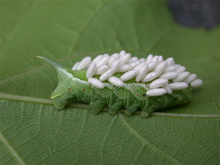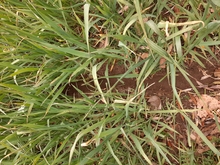While not grown for food, a cover crop can be a powerful ally in maintaining a productive, healthy garden. One of the ways cover crops can help is by suppressing weeds and breaking up pest cycles. This added plant diversity can shake up the system and can make life hard for insects, weeds and diseases that are used to the same human patterns.
While cover crops usually do not attract more pests to your landscape, in some cases they can bring in different insects or make certain diseases worse. To avoid frustration, it pays to know what regularly plagues your garden. This can also help you narrow down the seemingly endless choices of cover crop species while also maximizing their pest-fighting skills.
Diseases
If you are rotating vegetables in your garden, do not forget to include cover crops in your plans. Many diseases are tied to certain crop families and love to see a relative of the plant they infect. If this happens, bacteria or fungi can hide in the cover crop’s residue and hit your vegetables later in the growing season. In some cases, this can happen the following year, depending on the disease.
If you can, avoid planting the same plant family in the same location for three or four years. Sometimes, a lack of space or a burning desire for tomatoes can make this very hard. If that is you, consider using containers or coming to an arrangement with gardening neighbors.
One situation I have seen involves the pea and legume family (Fabaceae). Often, gardeners use these plants to add nitrogen for a succeeding crop. For example, planting vetch or clover before peas or beans can spell trouble. Damping off fungi enjoy multiple rounds of these plants in the same year.
Cover crops in the brassica family (Brassicaceae) such as radishes or mustard should not be used before their broccoli cousins. This is particularly important when you have a black rot problem, as transfer of the bacteria can occur. One idea for a broccoli bed might be to add oats (a grass) the fall before instead of tillage or daikon radish. The oats can be sown at the same time of the year as the radish, and will also die over the winter.
Another method to lower the risk of disease spread is to wait for one to three weeks before planting. Among other benefits such as water conservation, waiting allows for the soil to fight back disease-causing microbes. However, this one- to three-week waiting period is not set in stone. The number of days can go up or down depending on the diseases present, the cover crop species, how these plants are terminated (killed), and the weather.
Insects
Aside from pathogens, pest insects could also be present in a cover crop. Thankfully, collateral damage to your garden is very rare. The only case I have seen took place in an agricultural field rather than a backyard. On that farm, a rye cover crop was infested by armyworms during the spring.
When the cover crop was being slowly killed via an herbicide, the armyworms gradually moved onto corn, severely damaging it. Since corn and rye are part of the grass family (Poaceae), and armyworms prefer grasses, this again speaks to carefully choosing cover crops and waiting before planting your vegetables.
Increased diversity on your landscape can also bring in beneficial insects, which could prey on armyworms, hornworms or other invertebrate pests such as slugs. Cover crops can be the solution more often than the problem in that regard. If bringing these “good bugs” to your landscape is important to you, consider using summer cover crops such as buckwheat or phacelia.
Even if you do notice a pest insect on your cover crop, think twice before any control measures. For example, I have personally observed feeding by Japanese beetles on a summer cover crop of sorghum-sudangrass. This surprised me at first, but after close inspection the feeding damage was minor. Also, it was so late in the year (mid-August) that the adult beetles would be dead soon anyway. This made the decision not to apply any control, especially chemical, easy.
Deer and wildlife
With lots of talk about fungi, beetles and armyworms, one cannot forget about our fellow mammals. Animals can occasionally be an issue for cover cropped areas.
Look at any food plot seed mix marketed for deer and almost every species can also be used as a cover crop. Buckwheat, oats, clover and turnips are at particularly high risk for deer damage.
Ways to discourage deer are many, but physically excluding the animals is probably the best single thing you can do.
If you have a dense overwintering cover crop going into the winter, another pest could be a vole. Unlike moles, voles eat the roots of plants.
Last fall, I discovered several winding “runways” in my hairy vetch and oat cover. These odd trenches led to small holes in the ground, a telltale sign of voles. Controlling voles is extremely difficult, and since this thick cover crop canopy will be removed in spring, it is probably not worth it.
If you are not sure about which tunneling creature could be causing issues in your garden, Iowa State University Extension has a great flowchart that can help you narrow down the suspects.
While there are occasional concerns with pests in cover crops, a few steps made beforehand can vastly decrease the chances of problems. If nothing else, include cover crops in your plant family rotation, know which fungal or bacterial issues are already present, and take stock of the situation before applying any aggressive treatment.
Clark, A. (Ed.). (2008). Managing cover crops profitably. Diane Publishing. https://www.sare.org/resources/managing-cover-crops-profitably-3rd-edition/
Grünwald, N. J., Hu, S., & Van Bruggen, A. H. C. (2000). Short-term cover crop decomposition in organic and conventional soils: characterization of soil C, N, microbial and plant pathogen dynamics. European Journal of Plant Pathology, 106(1), 37-50.




